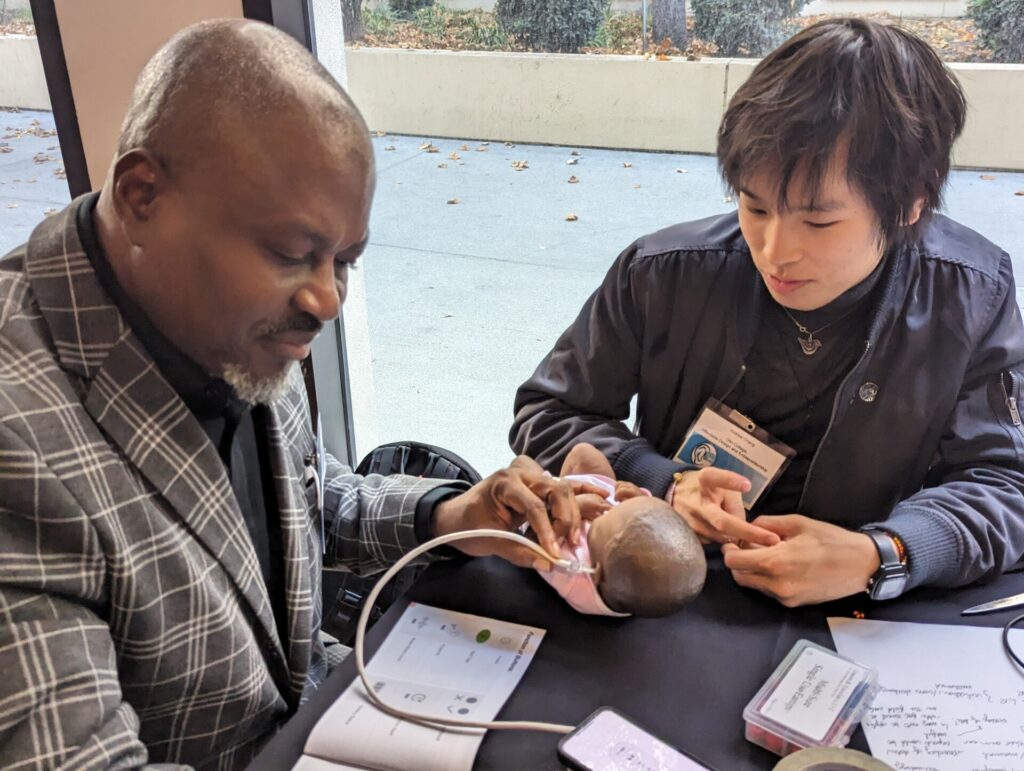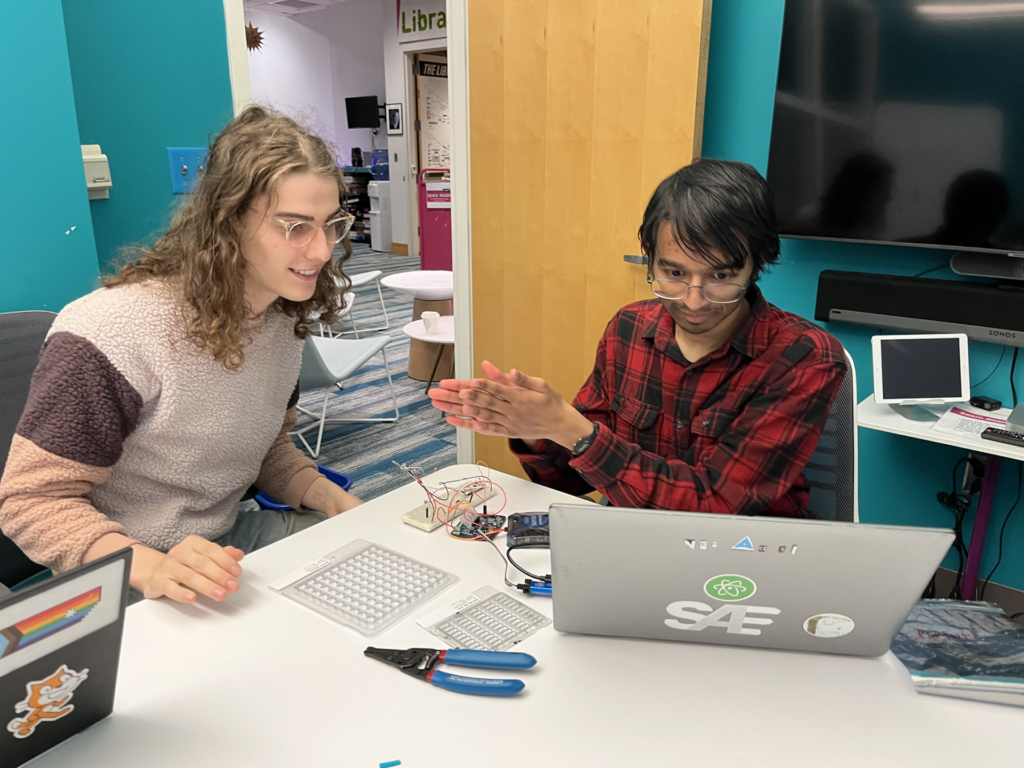Hearing loss is a prevalent issue, one that can impact very young children in the early stages of development who are unable to communicate the issue. Without adequate hearing testing, children can potentially experience developmental delays in areas such as speech, social development, and academic performance. Lack of affordable access to hearing tests and screening makes it very difficult for families to ensure the hearing health of their baby, especially in Guatemala, where 400,000 babies do not have access to screening, and thus are prone to experiencing these difficulties.
With the help of a $5,950 grant from EPICS in IEEE, a team of students at Franklin W. Olin College of Engineering and Babson College have collaborated through their joint Affordable Design Entrepreneurship program to create a device to make a difference. They were guided by faculty leads Elizabeth Johansen, Siddhartan Govindasamy, and Brad Minch.
An Affordable, Accessible Device
Traditional hearing tests and screening are expensive and typically administered by audiologists, both of which can make them inaccessible. Andrew Chang, a current senior at Olin College, worked on this project as part of his senior capstone. He is part of the design team. He explains, “What we are developing uses some now expired patents to develop an OAE [otoacoustic emissions] screening device. It’s a specific kind of hearing screening that doesn’t involve verbal feedback from the patient. So it makes it useful for nonverbal people such as infants.” The team also aims to make the device more financially feasible for use globally. “Currently, other devices that use this technology on the market are anywhere between five and ten thousand dollars apiece. We are aiming to reduce that price by a significant margin” he says, “we feel that there’s a demand in communities that have less access to audiological healthcare.”

Andrew Chang conducts a usability evaluation of several hearing screening device prototypes with audiologist Titus Ibekwe at the Coalition for Global Hearing Health meeting.
The demand for audiologists also makes these tests difficult to administer, which is another element of accessibility that this project aims to remedy. Those who do not have access to audiological healthcare would ideally be able to use this device. Guatemala is a prime spot for using a device such as this.
Venkadesh Eswaranandam, a sophomore student who brings his electrical engineering expertise to the team, says, “This project started with audiologist [Dra] Patricia Castellanos in Guatemala. She is currently the only audiologist doing these screens for all of Guatemala. She approached us with the idea of making this easier-to-use device that people who aren’t audiologists could use.’ The college students worked closely with the Foundation, Sonrisas que Escuchan, to ensure that their project could make an impact. Dra. Castellanos is the head of this non-profit. Eswaranandam continues, “It is a low-cost device that people just pass around in the communities. They do not have to make a trip to her to get hearing screenings or, even worse, not get them at all.”

The first test of the new standalone electronics prototype; Venkadesh Eswaranandam claps his hands to verify the electronics can receive sound through the tiny microphone. Other student pictured: electrical engineer Benji Pugh.
Sonrisas Que Escuchan: Smiles that Listen
To successfully complete this project, the university team worked alongside the non-profit, Sonrisas Que Escuchan, and their director, Dra. Patricia Castellanos, based out of Guatemala. “The idea is that this device could be produced and used in countries like mine where we have few audiologists, but we are working on baby screenings. The equipment cost is insane, and the default language is mostly English. It’s not easy for people that do not speak English to get used to the equipment.” The device that the university team is creating hopes to close this barrier, and ensure people of all areas of the globe are able to have access to this type of audiological healthcare. “We wanted to make something user-friendly to make it more accessible to other countries.”
“I love being among students,” Dra. Castellanos says, regarding her time working with the team. “It has been a nice experience, and when I see the device being produced after several years, it’s exciting to see the talented students trying to accomplish this. We may see this in larger companies, but seeing a smaller group of students that are very interested in our approach and what our needs are is wonderful.”
The engineering students displayed empathy and professionalism in their work with Dra. Castellanos and Sonrisas que Eschuchan. Dra. Castellanos explains, “We face issues in Guatemala that may not be experienced in the US. It can be difficult for students who have not worked in our country to see what our difficulties are, and how limited things can be working in the hospital, especially financially and with limited access to certain equipment. But with these students, they are listening.”
A Rewarding and Educational Experience
The team has learned a lot creating this project, even getting to travel and attend a conference with their prototype. Chang described his experience, “We got to go to a conference last semester called the CGHH conference [Coalition for Global Hearing Health] that was held in Los Angeles. We got to interview audiologists from all across the world and other audiological professionals and that was an exhausting but very rewarding trip.” The team received feedback on their prototype, and interviewed audiologists to gain knowledge from their expertise in the field. What they learned was able to improve their prototype and get even closer to delivering a new step in audiological health care.
Once the team completes the OAE prototype, the work will be passed on to their social enterprise collaborator, Solar Ear. Solar Ear will ensure their product is ready for mass production, and then be responsible for sales and manufacturing.
The funding for this project was made possible by the Jon C. Taenzer Memorial Fund established by the IEEE Foundation in 2019 with a generous bequest from the Estate of Mr. Taenzer, an IEEE Life Senior Member. For more information on EPICS in IEEE, visit https://epics.ieee.org/.

Recent Comments